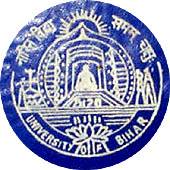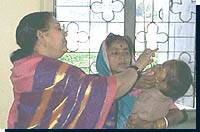
NGOs
Seminar On
Poverty
FundingAgencies
NGO'sMart
Chat
Helpline
News
MessageBoard
Links
ContactUs

|
|
Potentiality of fish industry in Bihar

Deprived of industry and mineral resources after the separation of Jharkhand, Bihar has a vast potentiality of agriculture, pisciculture and animal breeding which can lead to a new height of economic progress. There is the need to prepare a project for the development of fishery in north Bihar. The first priority should be given to a large number of hatchery at government and non government level for the production of Rohu, Katla, Naini, Singhi, Mangur and other varieties of fish popular in this area.
Bihar has 59150 ponds, 198 swampy ponds and lakes, 190 big chaurs and 50000 hectares of low lying fields filled with water through out the year making a total of 3 lac hectares of waterlogged land. As such, there is need of setting up a training centre for fishermen at Muzaffarpur. These fishermen are illiterate and they use old and obsolete methods of pisciculture which do not give remunerative return of their investment It is too costly for them to obtain training at Bhubneshwar and Kolkata. Latest variety of fishes developed at Central Research Centre for fish production, Bhubneshwar through hybridization system should be supplied to the fishermen of this state for boosting fish production. The fish production can be doubled if it is done along with goat-keeping, poultry, makhana production and paddy cultivation. The refuse of goat keeping etc is a good seed for the fish which can gain weight fast.
Further, for growth of fish industry, aqua culture sewerage treatment plants at Muzaffarpur and other towns of Bihar may be installed to treat the filth and mud flowing through the drains of the towns so that the urban drain water does not harm the fishes of chaurs and mauns (river bed) of suburban areas and may ensure better and clean environment for the fishes.
In a State of promise and potentiality for fish industry, it is a pity that fish worth about 18 lacs is brought from Andhra state for daily consumption in Muzaffarpur and worth 20 lacs in Darbhanga because Bihar is unable to supply the required need for consumption.
|
|
|
Fall in admissions in PG classes of Bihar 'Varsity

The number of admissions in post-graduate classes has alarmingly declined in B R A Bihar University. Of the 21 subjects being taught at the university level, hardly 40 to 50 per cent seats of students have filled up so far in 15 subjects at the close of admissions. Some literature courses have no students at all while most of Arts subjects except History have less than 50 per cent seats filled up. In all the Science subjects except Physics, however, all the seats are full in preliminary MSc classes. The reason behind the fall is attributed to socio-economic environment as well as preference of the students for job-oriented courses which are yet to be introduced in the University such as courses in computers and information technology.
|
Situation of Girls in Bihar

The Central Social Welfare Board supports just 13 institutions to run 50 creches for children of working and ailing mothers and spent just Rs.10 lakhs in the state. In Maharashtra the Board supports 256 institutions to run 1024 creches at the cost of 152 lakhs. In Andhra Pradesh 420 institutions run 997 creches at the cost of Rs. 151 lakhs and in Madhya Pradesh 405 institutions run 1018 creches at the cost of Rs.148 lakhs.
Girls in Bihar get married by the age of 18 (singulate mean age at marriage) Among other states only Madhya Pradesh has a lower age (17.4). Rajasthan 18.4. India 20.
Age specific fertility rate of girls who are 19 or less (15-19) is 75.5. Only four states have a higher fertility rate for the same age group-Andhra Pradesh (121.5) Madhya Pradesh (119.1). Rajasthan (100.2) and West Bengal 79.9. The average for India is 74.4 for Punjab 19.9 and Kerala 24.1. The marital fertility group for the same age group in Bihar is 190.4
Only 20 percent of primary school teachers in Bihar are women as compared to 67.3 percent in Kerala and 58.5 percent in Punjab.
Only one out of 20 women in Bihar manage to visit Cinema at least once a month.
The age specific death rate of boys in the age group of 0-4 is almost 21 (20.9 while that of girls it is almost 25 (24.8) according to SRS'91.
Only 21 percent of the girls join the middle school (Class VI) in Bihar, while 47.4 percent of the boys do. When almost 95 percent of the boys enrol in primary school only 54.4 girls ever enrol.
Of all the 51 districts in Bihar only Siwan has more women than men. In Siwan women outnumber men by 24 thousands. In all other districts men exceed women.
Only 26 percent of women in Bihar have access to a Radio National 44 percent (National Family Health Survey) 70 percent of women of Bihar are not exposed to any media according to National Family Health
|
Net surfing, now better and cheaper

For providing smooth net surfing to netizens of Bihar and Jharkhand, Bharat Sanchar Nigam Limited (BSNL) has now commissioned a high-power node for the first time in Patna. Earlier, the Internet services were provided through the Calcutta node.
The commissioning of the node is accompanied by a massive cut in the Internet tariff. The earlier charge of Rs 750 for 100 hours has now been reduced to Rs 500. Tariff-wise it is now comparable to private Internet service providers. Improved speed and accessibility are other point of attraction.
An internet connection is now provided on the spot -- on payment of the tariff at a single counter. Complaint of the subscribers are now looked into locally instead of being passed on to Calcutta for the same.
BSNL is now able to provide high-speed dial-up access through Integrated Services Digital Network (ISDN) to those who have this facility. High-end users like cyber cafes will be benefited from the ISDN facility. There is now no need to take leased lines through Calcutta as Patna BSNL is now well equipped to provide such connections locally which will be cheaper than the Calcutta connection. The super high-end users like corporate firms will be benefited from this.
|
Tardy Progress of Polio-vaccination in Bihar

About 34 per cent of the world's polio cases are in Bihar and Uttar Pradesh. According to World Health Organisation statistics for 2000, the number of confirmed polio cases around the
globe was 663. Of these, 228 were in Bihar and Uttar Pradesh. The rest of India had 36 cases , 40 per cent of the global total. Bihar and U.P have to be the main target for the eradication of polio.
The polio eradication programme hasn't worked too well in these two states. One reason is a host of rumours surrounding the vaccine. There are rumours that polio drops cause impotence, AIDS, paralysis and even death. Believing this, parents in these states have stayed away from the immunisation programme.
There have been instances when children have died after being given the vaccine. Each such case was investigated by the government and the finding was that in no case the polio drops were responsible for the death. children died due to malnutrition and other health reasons.
WHO is helping out the Union government in implementing the eradication programme. The target is to certify India to be polio-free by December 2005. To get this certificate there should be no polio case after December 2002. Forty districts in these two states have been identified for a ``preemptive mop up''. In this programme, every household in these districts will be visited and all children administered polio drops.

More...
Back
|
|



